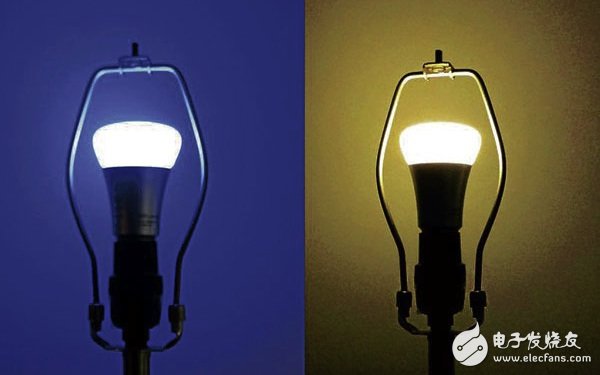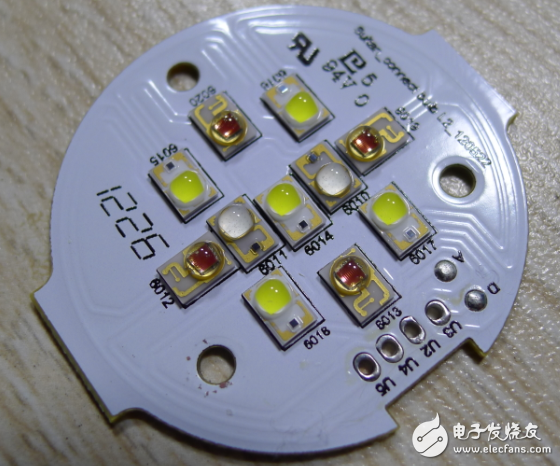We got Hue the last two days, we broke down one for the first time, because we want to know inside, a traditional lighting company, the old antique company that pays attention to the basic technology accumulation, how to put down the shelf to be a traditional Taiwan factory. The small peripherals that will be concerned, the bleak sales of Belkin's Wemo series is not enough to give the big brother a lesson?
But when I picked up Hue in my hand, it all had an answer. I realized that this is not a tentative game, but a strategic revolution, but from the point of view of work, it is undoubtedly a rare one on the market. See the industrial design boutique.

Unlike ordinary domestic LEDs, Philips' lighting system uses a loop ring design: the outer one uses a similar plastic material to facilitate the hand to grasp the scratched hand; the inner one is the aluminum heat dissipation system, the entire cavity The inner circuit uses a heat-dissipating glue to greatly increase the heat dissipation efficiency.
The LED driver part is working harder, and 11 LEDs work together to make the color display more uniform and coordinated. From the control box, the brain is also used, using the high-speed 32-bit STM solution plus the TI2530 Zigbee IC. The small web server through the RestFul interface provides the possibility of secondary development. Although iOS is not perfect (a bit of a card on iTouch), the design of UE and UX is simple but not simple. Ingenious color matching, smooth user experience, all this shows that Hue is a craftsmanship, full of sincerity, rather than the cold industrial goods made by traditional strong manufacturers.

Three combinations (control box, Hue bulb, iOS app)

The inside of the Hue base (the core of the thermal grease) has almost no obvious heat for a long time.

Hue bulb's LED array (full color gamut) is much larger than the standard 3-lamp RGB color scheme
However, Philips' sincerity is not just that. With Hue's launch, Philips first launched the developer community (meethue.com and unofficial everyhue.com), inviting programmers to improve and extend Hue's capabilities. (In our eyes, there are indeed a lot of things that need improvement.) This is also the behavior that hardware manufacturers rarely do in the traditional sense.
What we can see is that the hardware products related to smartphones, due to the wide openness, will not face the development bottleneck of manufacturers who cannot DIY and utilize the software community in the future.
Some manufacturers now prefer to develop a closed standard for internal use, but its development capabilities may not be able to meet future needs, nor can it exploit the potential of the hardware itself. Therefore, the practice of not using standards and opening interfaces may be more in line with the current trend.
To sum up, Hue brings some changes. Traditional household appliances and electronic products are no longer just about the appearance and design competition. A large number of products will quickly become Connected networking devices. Being a networked device means not only that you can easily complete remote control, but they will also gain unprecedented "smart" capabilities through networking, they will know the time and weather forecast, know your social account and calendar, and know your preferences. They can also be assisted with your other networked devices (such as having Hue and infrared sensors work together as an alarm device).
Sensors and communications, the further development of cloud back-end, will greatly reduce the manufacturing and communication costs of these devices, so that you only need to spend a few dollars or even a dozen dollars, your home appliance experience can be changed!
Starting from Hue, I think the most nervous thing should be Control4, Creston, the traditional "smart home" manufacturer.
why? Because Hue products in this way will make it impossible for people to enter the ordinary family's intelligent control products, directly cut one or two zeros behind the price tag, so that ordinary consumers can "buy" from the original "can't think" The stage of buying, this is a huge change brought by the popularity of smart phones to the traditional home appliance industry.
In fact, through similar lighting control system Hue, temperature control system Nest, socket system Wemo, speaker system SONOS, etc., everyone can use the smart phone DIY 90% of the traditional smart home function, not only can avoid the pain of new decoration (All are wireless systems), and the money spent is only a fraction of the traditional meaning of smart home.
So where do the smart homes of the future go? Do your best to predict:
Plug and play: no need to configure, plug in the power directly to use, we can't buy crimes for spending money;
Comprehensive mobile phone control: not using this friendly platform for interaction, it is too wasteful;
Lightweight of the gateway: Due to the computing power of the mobile phone, the gateway becomes dispensable. If it is necessary, it must be a very lightweight bargain;
Expansion and upgrade capabilities: Sales are just the delivery of a functional platform, and features are upgraded as the product is used;
Open and fun: Maybe open the app next time, discover the new features contributed by the netizens, and realize what you dreamed of;
Kickstarter model: Leading the idea of ​​personalized hardware products, complementing and challenging the giant's product integration plan;
Low-cost market strategy: rapid low-cost and market offensive strategies, generating a large number of star products.
Electronic Air Purifier,Air Cleaner Ionizer,Pm 2.5 Air Cleaner,Air Cleaner Dust
Dongguan V1 Environmental Technology Co., Ltd. , https://www.v1airpurifier.com